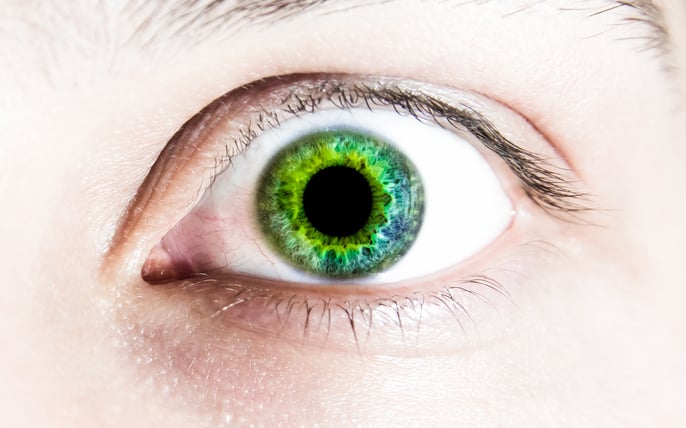
Migraine sufferers are at extra risk when it comes to eye strain at work. While eye strain doesn’t feel like strain in other muscles, for the work they do, our eyes contain some of our strongest muscles and are as subject to strain as any other.
Computer work is a common migraine trigger, presenting a handful of danger zones including flickering lights, bright lights, and glare with a high contrast between highlights and shadow. If you experience frequent migraines during working hours, part of the trouble could be eye strain caused by computer use. For many of us, cutting down on the number of hours spent staring at a screen isn’t an option, but there are a few things we can do to minimize the harm and make our desks healthier places.
Understanding Eye Fatigue
If you run a marathon your aching muscles will let you know what hard work it was. Sitting for hours at a time in front of a computer is like asking your eyes to run a marathon, and they’ll protest with the symptoms of eye fatigue. These include:
- Difficulty focusing
- Dry or scratchy eyes
- Red eyes
- Burning or stinging
- Heightened sensitivity to light
- Double or blurred vision
- Neck, shoulder or back pain
- Generally sore, tired-feeling eyes
Another name for digital eye fatigue is computer vision syndrome (CVS). It’s not thought to cause permanent damage to eyes, but it’s unpleasant and can trigger your migraine attacks.
The problem is made worse because, these days, as well as sitting for long working hours at the computer screen, leisure hours are also spent looking at the screens of smartphones, TVs or gaming consoles. It all adds up to a mess of problems for those who have migraine headaches.
Tips for Reducing Digital Eye Fatigue
Reports and research indicates that 90% of computer workers suffer from some kind of eye fatigue. Despite its prevalence, no one should accept the condition as normal. Here are some actions anyone can take to help reduce eye strain.
Take frequent breaks. It’s easy to become absorbed with information on screen, whether for leisure, entertainment or work-related purposes. Giving eyes a rest simply by looking elsewhere helps to reduce the strain as it forces the eyes to change their focal distance. Try the 20/20/20 rule, in which we take a 20 second break every 20 minutes, spending the time looking at something at least 20 feet away. Because it’s easy to become absorbed, with time passing unnoticed, it can help to set a timer as an reminder. You could set your smartphone to ping every 20 minutes to remind you to take a short break and give your eyes a rest.
Don’t forget to blink. We don’t blink as often as we should when looking at a computer screen. And, interestingly, studies indicate that even when we do blink during computer work we only partially close our eyelids. This can cause dry eyes, which is made worse by the dry air environments in many offices. Using lubricating eye drops can help if your eyes feel dry, but don’t confuse lubricating drops with those intended to whiten the eyes.
Optimize your display screen. Choose LCD screens over CRT screens if possible. The antireflective surface on LCD screens can help to reduce eye strain. Choose the highest resolution possible for your screen so the images and text is sharper, and at the same time if you are using an older CRT screen set the display settings to the highest possible refresh rate, at least higher than 75 Hz.
Reduce ambient lighting. For computer use, ambient light should be around half as bright as the lighting typically found in office environments. Cut out the bright light coming in through windows by closing the drapes or lowering the blinds, and position your screen so the light is coming from the side rather than either before or behind it. An anti-glare screen can also help reduce computer eye strain.
Adjust your screen display settings. Our screens are often too bright, creating the effect of looking constantly at a light source. The screen should be no brighter than the ambient surrounding light. Adjust text size so it’s easy and comfortable to read, and whenever possible choose black print on a white background. Both Apple and Windows operating systems have display settings that can be adjusted.
Finally, if you wear spectacles or contact lenses, it could be worth getting a prescription for computer glasses. Contact lens wearers or those with bifocal glasses should investigate this, since neither of those lenses are optimal for computer use.
If you find your work environment often triggers a migraine attack, it could be eye strain that’s contributing to the problem. Investigating alternative working conditions could either alleviate the symptoms or rule out a possible cause.

